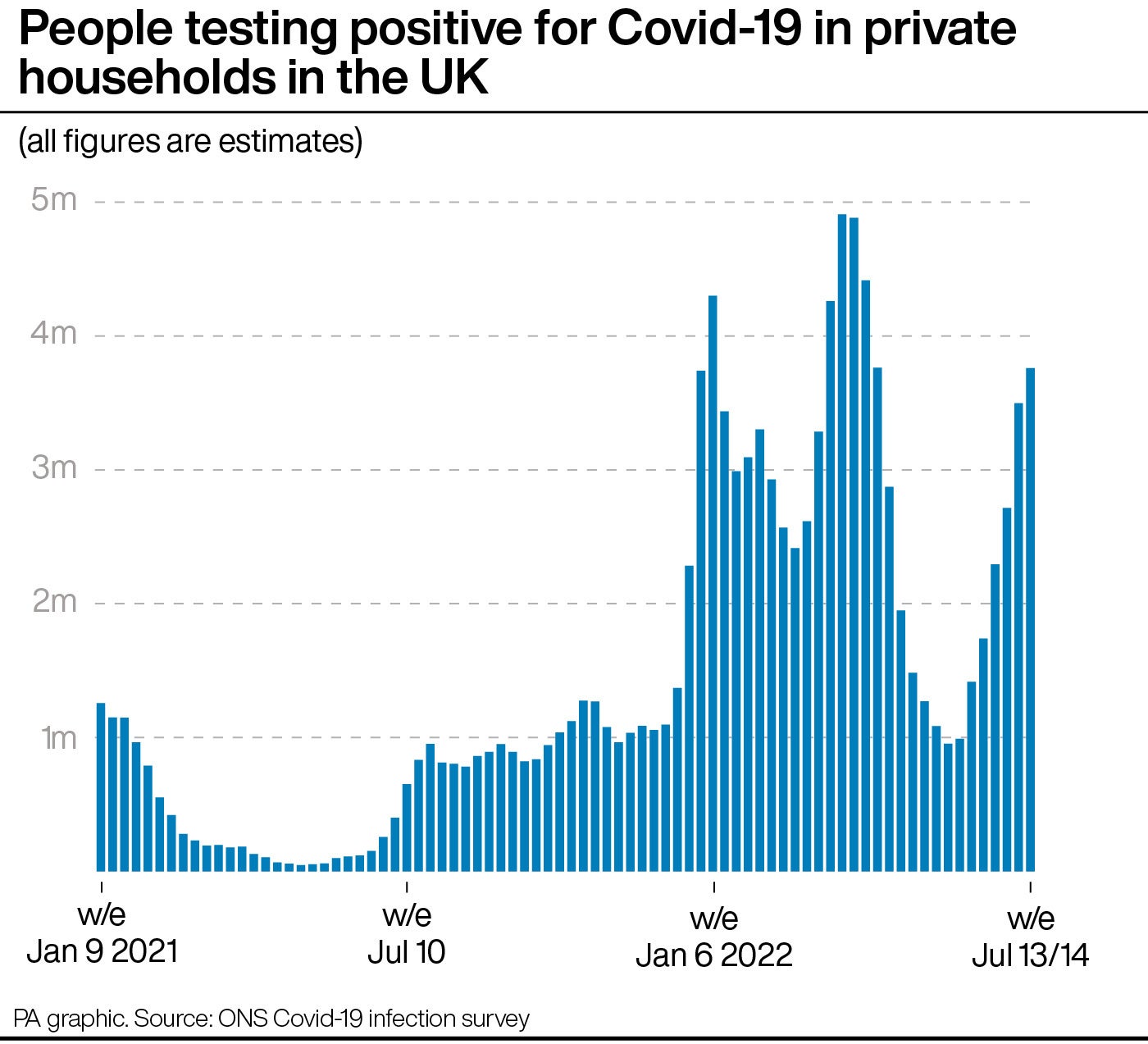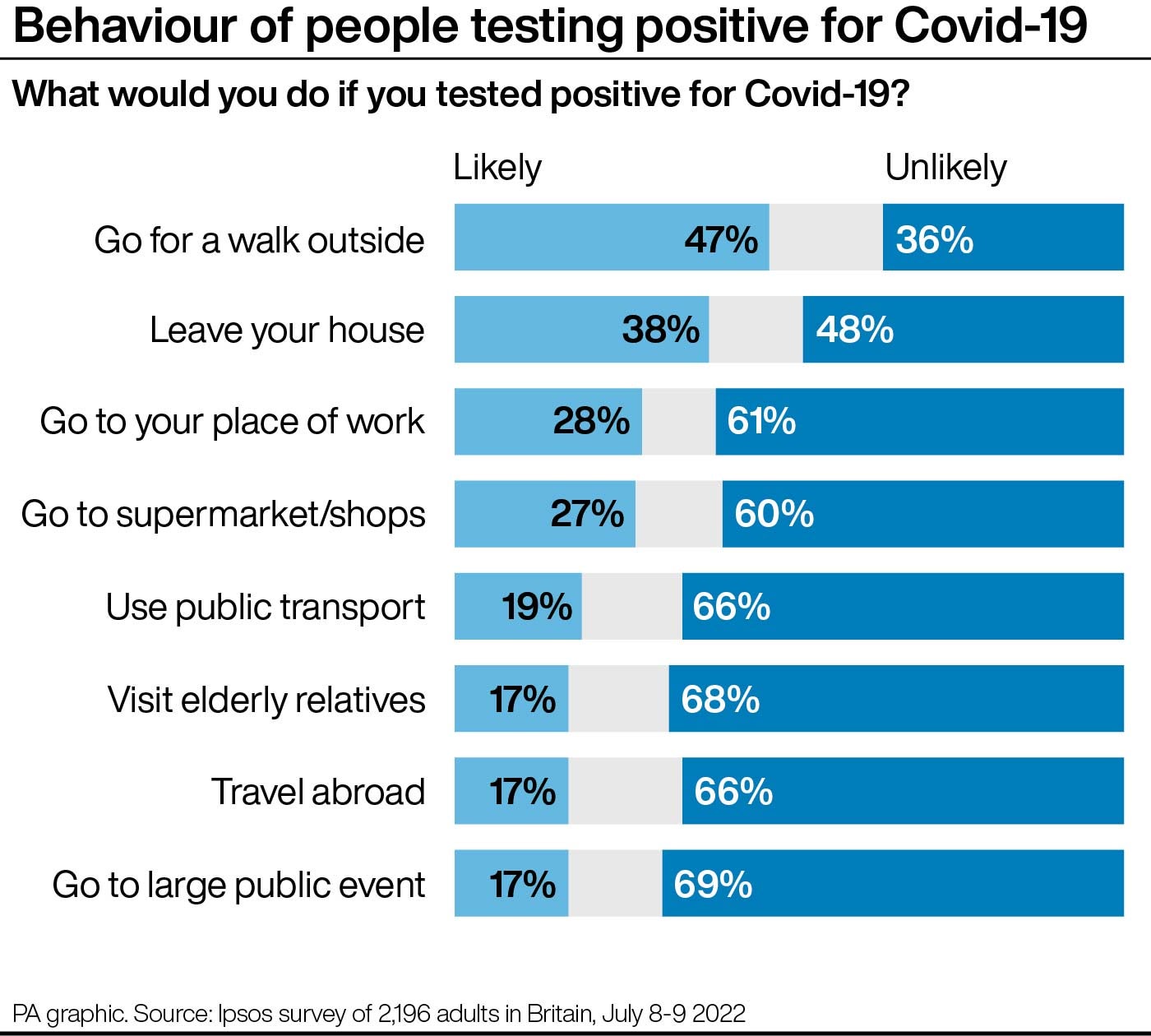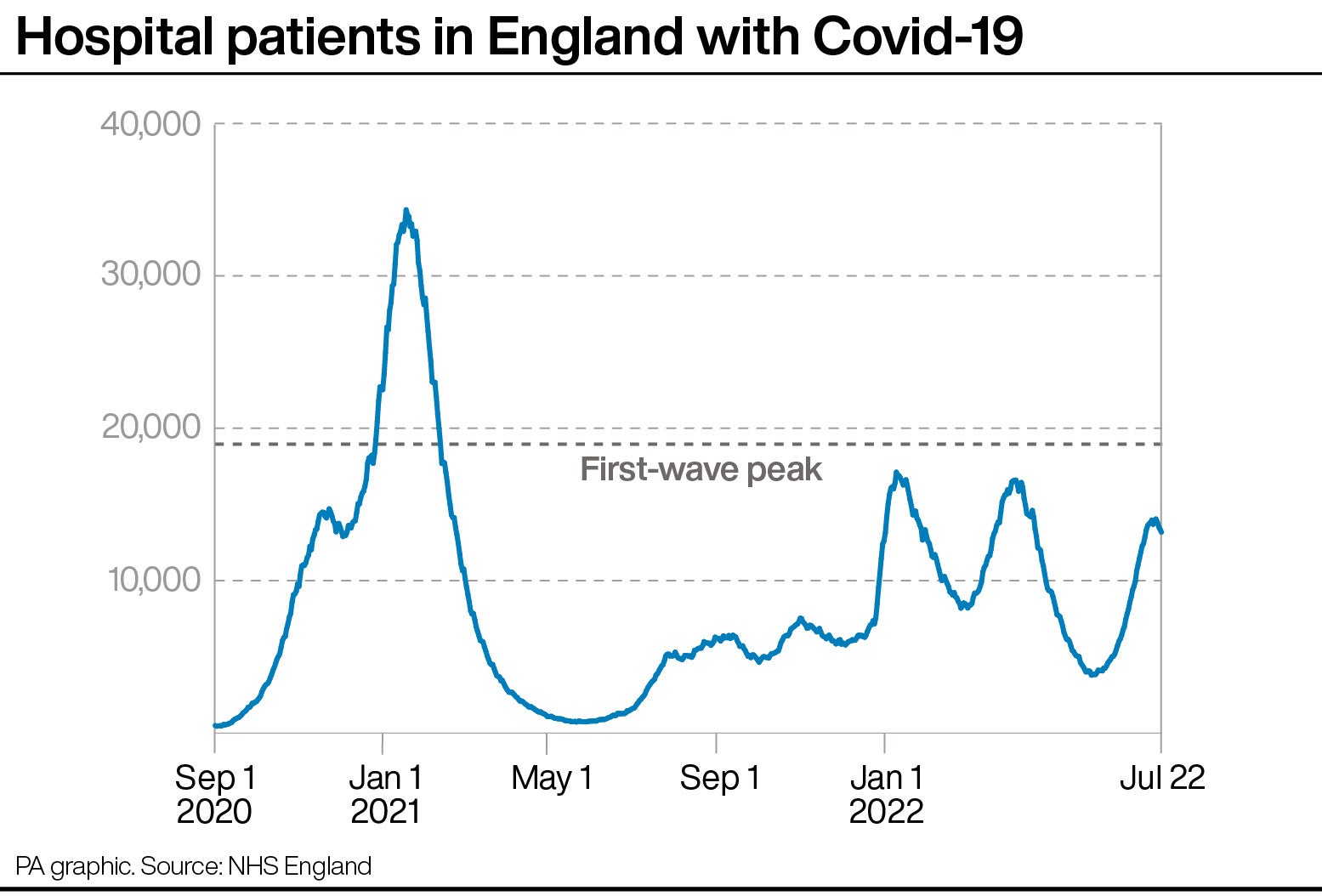
Covid-19 infections are continuing to rise in England and have reached their highest level for three months, but the trend in the rest of the UK is uncertain, new figures show.
Hospital numbers also appear to have stopped climbing, though it is too early to say if the latest wave of the virus is starting to peak, experts have warned.
The current wave is being driven by the subvariant Omicron BA.5, which is now the dominant form of Covid-19 in the country.
High levels of coronavirus antibodies among the population – either from vaccination or previous infection – mean the number of people seriously ill or dying from the virus remain low, however.
A total of 3.8 million people in private households in the UK are estimated to have had Covid-19 in the week to July 13/14, up 7% from 3.5 million in the previous seven days, according to the Office for National Statistics (ONS).

This is the highest estimate for total infections since mid-April, but is still below the record high of 4.9 million seen at the peak of the Omicron BA.2 wave at the end of March.
Kara Steel, ONS senior statistician for the Covid-19 infection survey, said: “Infections have, overall, continued to increase in England, reaching similar levels to those seen in April during the BA.2 wave.
“However, we are seeing some uncertain trends in the latest data across the other UK countries, some English regions and among some age groups.
“It is too early to say if this most recent wave is starting to peak, but we will continue to closely monitor the data.”
The rise in UK infections has been driven by a jump in England, where 3.1 million people were likely to have had the virus in the week to July 13, the equivalent of around one in 17.
This is up from 2.9 million, or one in 19, a week earlier.
In the other three nations, the picture is described by the ONS as “uncertain”.
Covid-19 remains most prevalent in Scotland, where 340,900 people were estimated to have had the virus in the week to July 14, or around one in 15.
This is up slightly from 334,000, or one in 16, and is the highest estimate for Scotland since the start of April.
Wales has seen infections level off at 183,200, or one in 17 people, broadly unchanged on 183,500 in the previous week, which was also one in 17.
In Northern Ireland, infections have dropped to an estimated 88,400 people, or one in 20, down from 107,600, or one in 17.
Omicron BA.5 is now the dominant variant of coronavirus in the country, the UK Health Security Agency said on Friday.
BA.5 was first identified in April this year and was soon found to be more transmissable than previous forms of the virus.
It is the latest in a run of variants to become the dominant form of Covid-19 in the UK, which began with Alpha in winter 2020/21, followed by Delta in summer 2021, Omicron in winter 2021/22 and most recently Omicron BA.2 in spring 2022.
A new variant, BA.2.75, has recently been categorised but at present accounts for only a small number of cases in the UK.
The latest infection figures come as new polling suggests public concern about Covid-19 has fallen to its lowest level since the start of the pandemic.
Around two-thirds of people surveyed (65%) said they are concerned about the risk coronavirus poses to the country, down from 71% in March, according to data shared with the PA news agency by poll company Ipsos.
Some 56% of respondents are concerned about the risk the virus poses to people personally, down from 59%, while 39% are not concerned, up from 36%.
The survey of 2,196 adults in Britain was carried out on July 8-9, at a time when infection levels were already rising across the country.

The findings suggest most people are still prepared to take certain precautions if they know they have tested positive for Covid-19, with a majority saying they would be unlikely to go into work (61%), use public transport (66%), visit elderly relatives (68%) or go to the shops (60%).
But more than a quarter of respondents (28%) said that, despite testing positive, they would go to work, more than a third (38%) would leave the house, while nearly half (47%) would go for a walk outside.
Keiran Pedley, research director at Ipsos, said: “Although concern about the virus is at its lowest level since the pandemic began, it should be noted that a majority of the public are still concerned.
“They are also prepared to avoid seeing others or spending time in public places should they test positive for the virus.
“This all shows that, whilst other issues, such as the cost of living, might be more foremost on people’s minds, the public are still prepared to take the virus seriously.”
Separate data suggests the recent rise in the number of hospital patients testing positive for Covid-19 looks to have come to a halt, with figures levelling off slightly below the previous peak.
Some 13,182 people with coronavirus were in hospital in England on July 22, down 6% from July 15.

It is the third day in a row the week-on-week change has shown a fall.
There were 16,600 people in hospital with coronavirus in England at the peak of the Omicron BA.2 wave in April, according to NHS figures.
The latest surge saw patient numbers climb through much of June and the first half of July, reaching a high of 14,044.
Hospital data for Scotland suggests numbers have also levelled off in recent days, while in Wales and Northern Ireland they are starting to fall.
In all four nations, patient levels in the latest wave have remained far below those reached in the early part of the pandemic.







